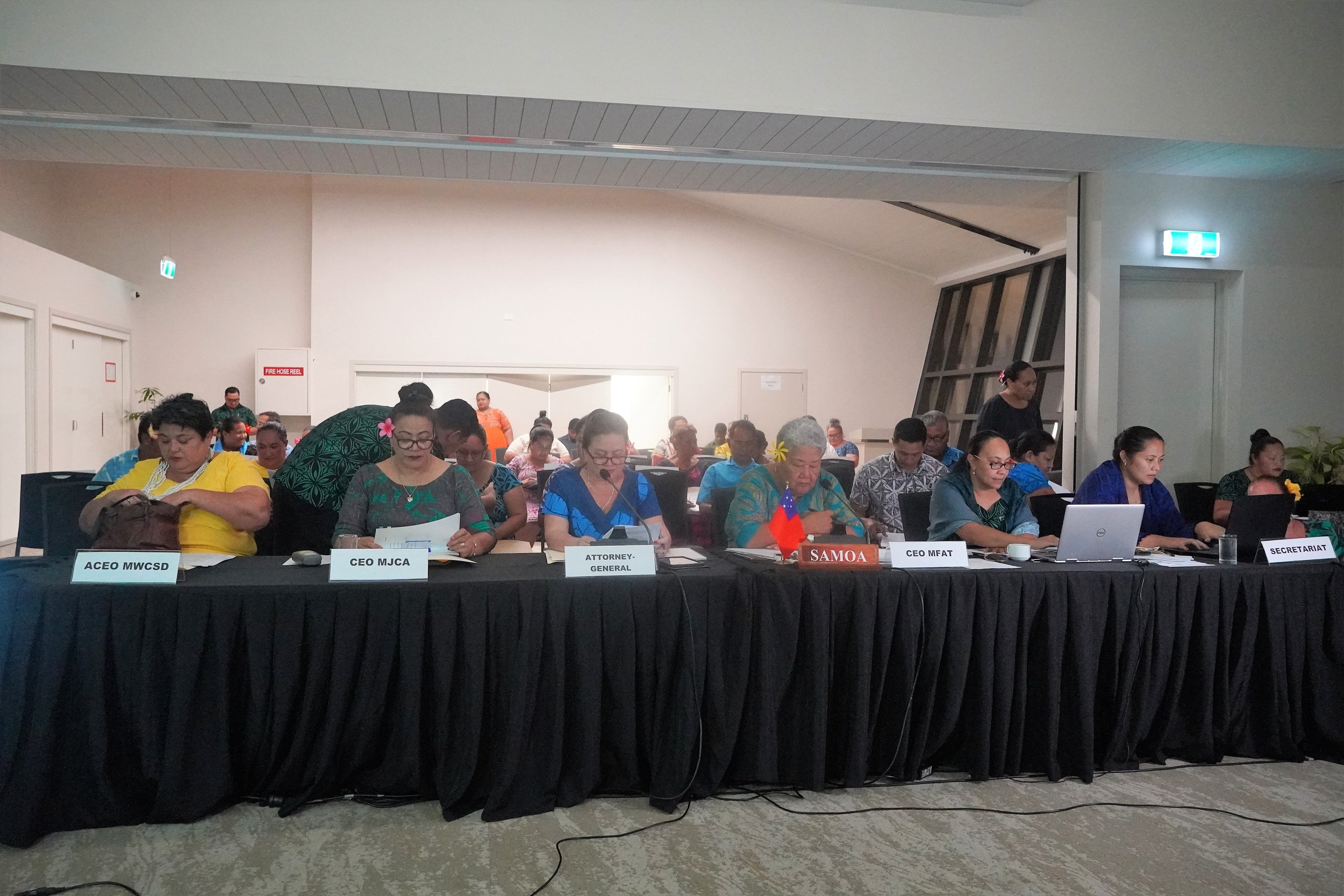Samoa human rights status has progressed well, more work remains
Hon. Fiame Naomi Mataafa – Photo Credit: MFAT | Alvaro Hoyos
Over a 12 hours-time difference between Apia and Geneva, the report on the state of human rights in Samoa came under the microscope of the fifty-four (54) member states of the Human Rights Council Universal Periodic Review (UPR) Working Group.
The Samoa delegation was led by Hon. Fiame Naomi Mataafa, Prime Minister of Samoa, and the interactive dialogue was led by the Chief Executive Officer (CEO) of the Ministry of Foreign Affairs and Trade, Peseta Noumea Simi. She was supported by the Attorney General Su’a Hellene Wallwork, CEO of the Ministry of Justice and Courts Administration Moliei Vaai, ACEO Research, Planning and Policy Division of the Ministry of Women Community and Social Development Fitiao Susan Faoagali, and Members of the National Mechanism for the Implementation, Reporting and Follow-up (NMIRF) Taskforce, from several government ministries.
The Office of the Ombudsman/ National Human Rights Institution, the United Nations, and representatives of non-governmental and civil society organisations also joined the Samoa delegation at Lava Hotel around 9pm November 2nd to hear from the Human Rights Council and their observations on the progress of human rights in Samoa and to take note of their recommendations on human rights concerns that Samoa needs to consider for implementation, until the next UPR reporting cycle.
This is the 39th Session of the Human Rights Council UPR Working Group, which is taking place from the 1st to the 10th November. Samoa is one of the 14 countries reporting during this session.
Samoa presented its first report in May 2011, with its second review in May 2016. Since the first two reports, Samoa has continued to invest in improving the implementation of its human rights obligations.
Panel of CEOs | UN Samoa –Photo Credit: Aterina Samasoni
One significant mechanism to strengthen the implementation was the establishment of the National Mechanism for the Implementation, Reporting and Follow-up (NMIRF) Taskforce (“Taskforce”) in 2016. The Taskforce ensures consistent and wider stakeholder engagement, utilizing the sector wide approach and aligning the different reporting processes as well as monitor the progress of implementation Data collection for the reporting has also improved with the availability of the SADATA web application which helps develop a national implementation plan by clustering recommendations, identifying implementation gaps and regularly collecting data through the related consultations.
The Prime Minister of Samoa, in her opening remarks reiterated the fact that the fa’asamoa holds core values that guide social interaction such as respect, dignity, love, protection, and service, which mutually reinforce human rights.
Hon. Fiame also said that ‘while there is progress, not all are benefitting equally and many challenges remain.”
She added that the review, is a useful platform for Samoa to identify the gaps for dedicated attention and that her government is committed to address the new and emerging issues from this UPR cycle in the country’s development priorities for the next five years.
The members of the Human Right Council commended the progress Samoa has made to improve the rights of persons of disabilities, the rights of women, children, fa’afafine and fa’atama, and the peoples indigenous, cultural, political and economic rights. Samoa’s attention was drawn to strengthening efforts in the elimination of gender- based violence, protection and safety of children, upholding media freedom and ratifying the three remaining core human rights conventions that Samoa has yet to do.
In Samoa’s closing remarks to the successful review, the Prime Minister highlighted that “virtual presentations allow for more people to be involved in the process and can strengthen ownership.” She also noted that there are no simple solutions to some of the issues raised, and stressed that for Samoa, “a whole of society approach with a whole of government response can make all the difference.”


